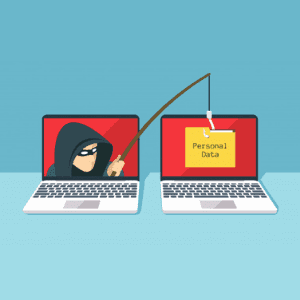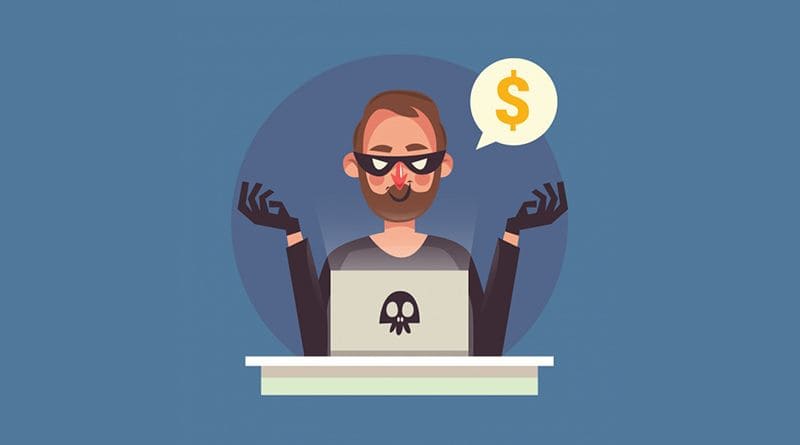There are hundreds and thousands of websites being developed every day. Many brick-and-mortar stores are turning towards the online world for reaching their target audience. Before developing a website one needs to register a domain name for creating an identity in the online world.
Have you heard about cybersquatting while registering for your domain name? Or have you mistakenly registered for a trademarked domain from a cybersquatter?
Don’t panic. Here’s what you need to know about cybersquatting in detail.
What is Cybersquatting?
Cybersquatting is an extensive term for different cyber offenses related to domain names. It includes the use, sale, or registration of a trademarked domain for bad intent. Basically, it is done to earn profit by cybersquatters.
Most of the domains are sold to the first person that is trying to register the name. This makes it easy for the cybersquatter to register a domain prior to a legitimate company gets the chance to register it.
Companies face two significant issues with cybersquatters. The first is that cybersquatters force the company to repurchase its name. For instance, if a cybersquatter registers the domain “websiteforyou.com” prior to the business “WebsiteForYou”.
After that when the business tries to register its domain, it is unavailable. They contact the cybersquatter to take the registered name back. But the cybersquatter charges the business with an inflated rate for the name. Here, it is possible that the cybersquatter isn’t only trying to make a profit, but is also using the trademarked name to slander the trademark holder.
The next major problem that businesses face with cybersquatters is defamation. In this issue, cybersquatters use the trademarked domain name to defame a business online, either in the form of cyber blackmailing or via an ill will.
Suppose that the business tries to register their trademarked domain “WebsiteForYou” and finds that it is already registered.
But when the website is checked, the business finds the cybersquatter has already set up the site for replicating the business. Moreover, the cybersquatter has also listed fake products for stealing money or credit card information, displayed openly abusive or false information about the business. The business then thinks that WebsiteForYou is the only option to save its reputation and gets ready to pay the price asked by the cybersquatter.
Suggested Reading: 6 Ways To Prevent Hackers From Touching Your Ecommerce Website
History of Cybersquatting
The “cybersquatting” term was first time used in USA in the early 90s. At this time, the businesses didn’t know the commercial opportunities that were available on the Internet. Some cybersquatters registered the names of popular businesses as domain names and had an intention of selling the names again to them when they realized it. Some of the victims of cybersquatters were Fry’s Electronics, Hertz, Panasonic and Avon. Today, cybersquatters don’t find the opportunities easily as most businesses understand that establishing domain names is the first priority.
Types of Cybersquatting
Basically, cybersquatters can register the domain names that are available without any restriction, even if similar ones are already registered.
You might have heard about ICANN. It is a non-profit organization formed in November 1998. ICANN is referred to as Internet Corporation for Assigned Names and Numbers. It has been assigned the responsibility of managing the ownership of the Domain System.
Your domain name gets registered via a master database when an application is filed with one of the accredited registrars of ICANN. If the domain name is available and the applicant pays for it, he automatically becomes the owner of the website name.
Remember this rule when you have a business name in mind: Domain name registration is based on first-come, first-serve.
ICANN registrars don’t check if the domain name’s applicant is related or associated with the business that owns the trademark.
Thus if “milesweb.co.uk” was available, an applicant without any relation with MilesWeb would have been able to acquire it.
Since there isn’t any domain name regulation, cybersquatters are finding different schemes to earn profit from holding your trade name hostage:
1. Typosquatting 
This type of cybersquatting involves “URL hijacking”, “a sting site” and “fake URL”. Typosquatters are alert to the mistakes which Internet users frequently make when typing a URL. For example:
- Misspellings – www.exampal.com
- Different Phrasing – www.examples.com
- Use of other domain variations – www.example.net
- Fake website –Appears similar to the authentic website in terms of layout, design and content.
 2. Identity Theft
2. Identity Theft
In this type of cybersquatting, the software is used that enables the cybersquatters to track down the domain names that were mistakenly not renewed by the owner. When a domain name is re-registered by the cybersquatter, he can link it with a website that clones the original. When the visitors come on the cybersquatter’s website, they will think that they have landed on the original website.
3. Reverse Cybersquatting
In this type of cybersquatting, the cybersquatter directly steals your domain name while you are resolving the existing disputes over it. You will be pressurized by the reverse cybersquatter to transfer its legal ownership to another individual or organization that has registered a trademark reflected in the domain name.
4. Name Jacking
In the United States, you can avail of trademark protection for your name if it is different via advertising, associated as a brand, or recognized as an entity. For example, the personal name of a famous celebrity.
However, personal names that don’t come under these qualifications can’t opt for trademark protection as people within the same location may have a similar name.
In name jacking, the cybersquatter registers a domain name related to an individual. Generally, celebrities, politicians, and other famous people are targeted with this.
Suggested Reading: Cybersecurity Checklist For New Business Owners
How Does A Cybersquatter Earn Profit?
A cybersquatter can monetize these illegal practices in five ways:
1. Domain Parking
The individual can redirect a domain name to a website that includes advertisements so it can generate traffic.
2. Domain Name Ransom
Cybersquatter can spread ransomware using a domain name. For the victim to get access to the site, he needs to pay the amount of the ransom.
3. Affiliate Marketing
A domain name is redirected to websites that sell products and services to earn commissions.
4. Hit Stealing
In this, a visitor of the cybersquatted domain name is taken to the website of a competitor.
5. Scamming
This includes identity theft and credit card fraud. Visitors landing on a cybersquatted website may be asked to provide confidential information to win prizes in a lottery.
Notable Cybersquatting Cases
Cybersquatting is the most significant issue for brands and celebrities today that needs to be constantly observed for spotting fake accounts and websites being developed. Also, domain names already are taken need to be promptly renewed. Check below some of the most infamous cybersquatting cases in internet history:
eBay
In 2015, eBay – an online auction platform was staggered for registering 1,153 domain names in a bad faith. All the domains included the word “eBay” and three numbers followed by a .net or .com suffix. It is one of the biggest cases that was settled by the World Intellectual Property Organization’s Arbitration and Mediation Centre to date.
Jennifer Lopez
Popular singer, actress, and retailer Jennifer Lopez was a victim of a cybersquatting scam in 2009. Sites with names jenniferlopez.org and jenniferlopez.net were developed to rip off money from the star’s fans by overloading them with ads and affiliate links. The star had to follow a lengthy lawsuit to win back both domains, which were returned to the Jennifer Lopez Foundation.
Are You a Victim of Cybersquatting?
When you decide your domain name and want to know if it is cybersquatted or not, just type the domain name in the address bar and then press “enter” to find where it takes you.
Check below the few possible scenarios:
- You redirect on a website that displays “Under construction”, “This domain is for sale” or “Can’t find server”. It is clear with this that the owner’s aim is to get profit from selling the domain name.
- You land on a properly functioning website packed with advertisements for products and services similar to the ones carried under your trademark. The cybersquatter’s aim is to gain profit using your trade name.
- You land on a website that has the same domain name but doesn’t compete with your products or services. This can’t be said as cybersquatting but yes it’s a trademark infringement.
How disappointing it would be to know that you can’t use the domain name you have worked on and were planning to buy it for your online business. But instead don’t get too emotional instead stay calm, relax and examine the situation carefully and think of the other possibilities.
For instance, if your web page displays “Under construction”, there is a possibility that the domain name’s owner is planning to buy it for the website.
Then you can search for the person who owns the domain name. This can be done by using the “WHOis lookup” feature on the whois.net website. Next, contact the registered owner and check if the individual is ready to sell the domain name at the proper price.
In case, the price is affordable, you can purchase the domain name. This would be a cheaper option rather than going for the arbitration or litigation process.
If Yes, What To Do?
If you are a victim of cybersquatting and the domain name owner isn’t interested in negotiating the sale of the domain name to you, you can follow the below options:
- Apply for arbitration procedures under ICANN
- File a suit against the domain name owner under the Anticybersquatting Consumer Protection Act or ACPA
What’s the difference between the two?
Arbitration Through ICANN
The Uniform Domain Name Dispute Resolution Policy (UDNDRP) was developed and implemented in 1999 by ICANN. The purpose of this policy was to resolve disputes related to domain names.
An arbitration process is assigned by the UDNDRP that can be started by any person or complainant who disputes the below instances to the ICANN:
- The domain name is matching or confusingly similar to a trademark to which the individual who has complained has rights to;
- The domain owner hasn’t expressed any legal interest in the domain name nor has rights;
- The disputed domain name that is registered is being used for bad intent.
In case these conditions are successfully proven, the domain name will be assigned to the complainant. Note that no financial remedies are covered under the UDNDRP.
Litigation Through the ACPA
The ACPA allows you to sue an alleged cybersquatter in federal court and get the court order for retrieving the domain name. You might have seen cases where the cybersquatter is asked to pay the monetary damages.
For winning the case against a cybersquatter, you must be able to prove the below things:
- There is a bad intent of earning profit from the domain name;
- The trademark or business name you registered for, was already unique at the time of domain name registration;
- The domain name is certainly identical and confusingly same as your trademark;
- Your trademark is qualified for securing under existing federal trademark laws as it is different and you were the first one for using it for business.
But in case the alleged cybersquatter proves that there are legal reasons for registering the domain name without trying to earn profit by selling it back to the complainant, the federal court might allow him to keep the domain.
What is the best option then?
You will be advised by many trademark experts to go through the arbitration process under ICANN as it is a faster and inexpensive way without the need of an attorney’s assistance.
Conclusion
There are thousands of businesses that register their domain name every day. So, it can be a challenging task to search for a unique trade name. But don’t step back due to this.
There are several businesses that lack an online presence and you shouldn’t be a part of those. In case you are planning to start a business ensure that your website is mobile responsive. Once you have decided on your trade name, register it as your domain name immediately.
Don’t forget the rule stated in this article:
A domain name is served on a first-come, first-serve basis.







